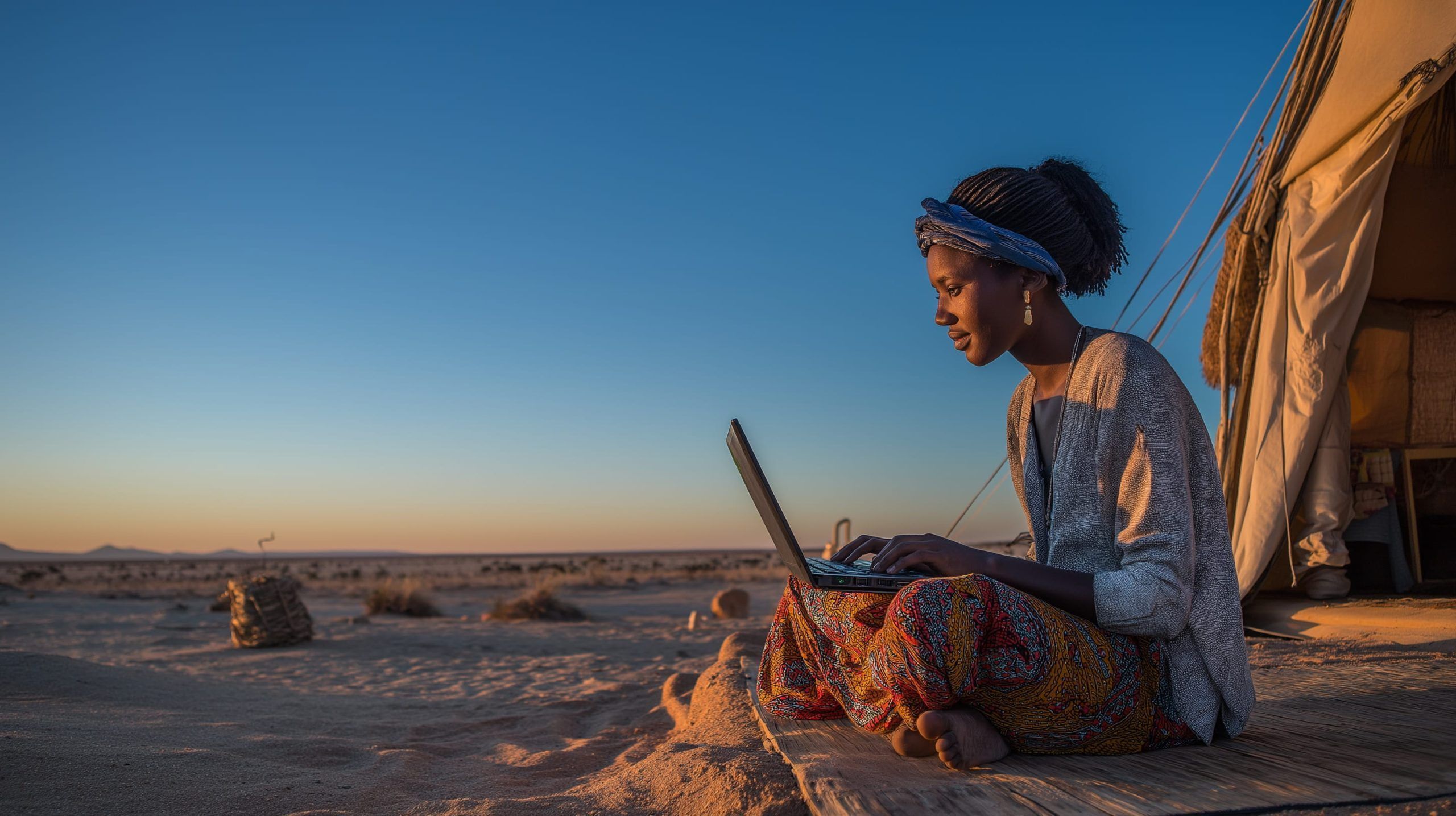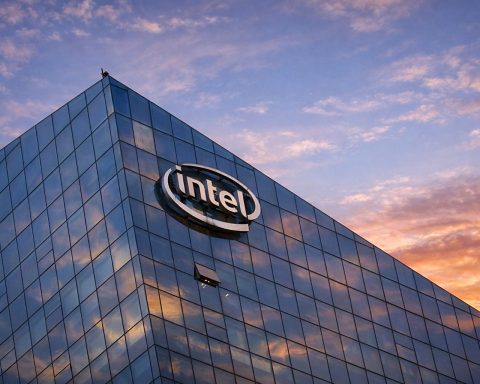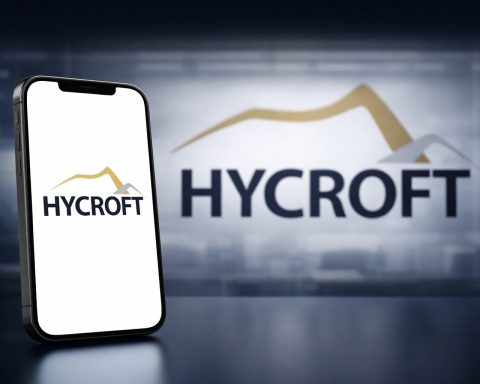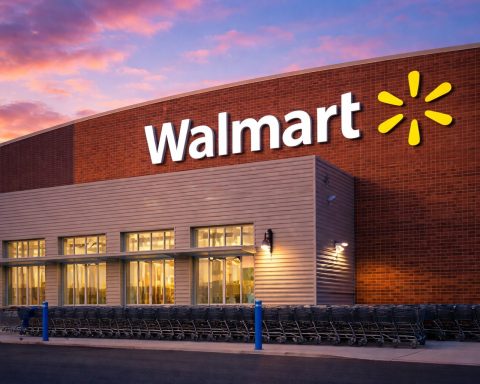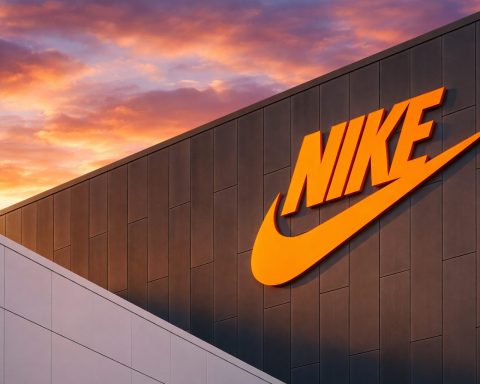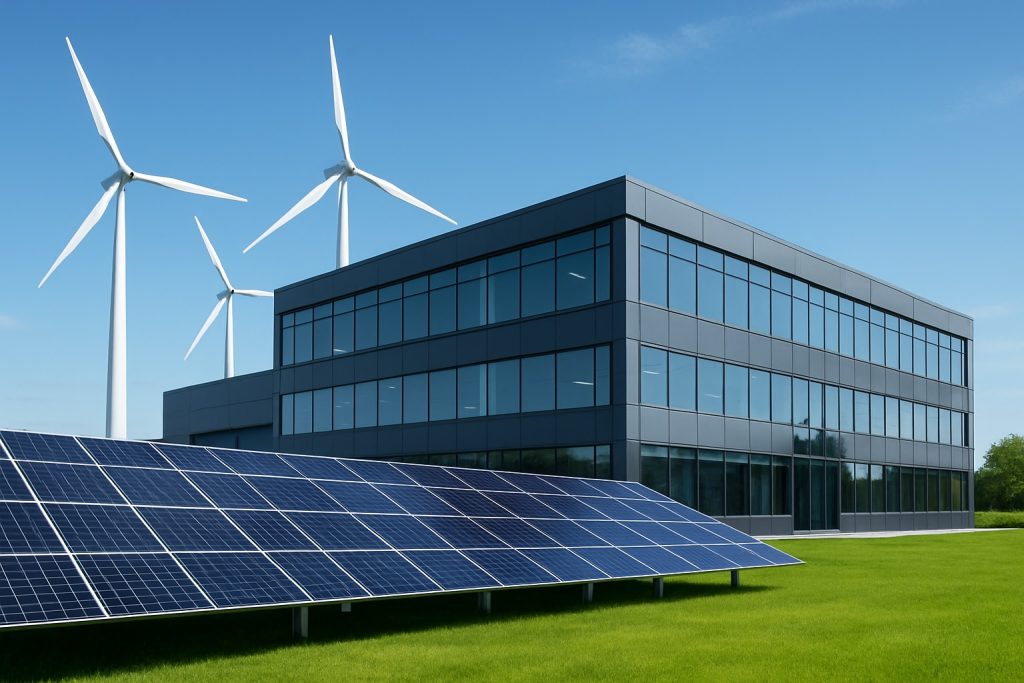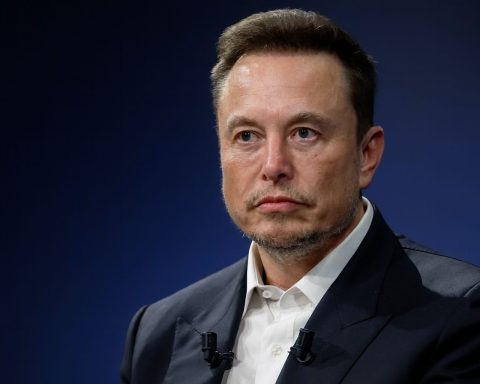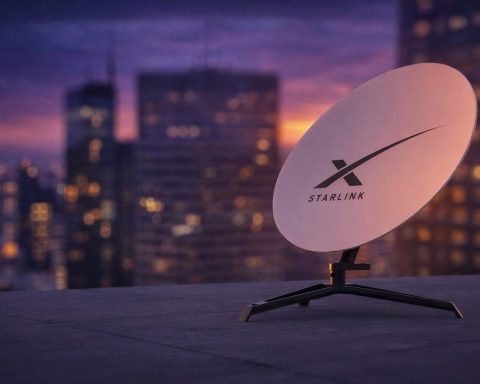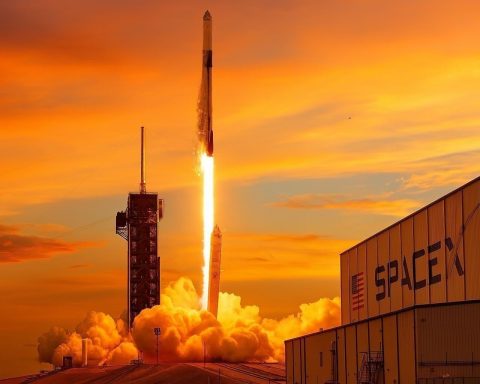-
<li Namibia had about 1.6 million internet users by early 2024, roughly 62% of the population, up from 53% in early 2023.
<li The 2012 landing of the West Africa Cable System (WACS) at Swakopmund dramatically expanded international capacity and reduced latency.
<li Equiano landed in Namibia in 2022–2023, delivering up to 20 times more international bandwidth and adding redundancy beyond WACS.
<li MTC launched the 081Every1 rural coverage project in 2017, helping mobile 4G reach roughly 88% of the population by 2024.
<li Mobile subscriptions exceed the population at about 2.9 million, while fixed broadband subscriptions were only around 62,000 in 2019.
<li There remains a stark urban–rural divide: 5.1% of rural households have fixed home internet versus 23% of urban households, with about 93% of the population under some telecom coverage.
<li Median mobile download speed was about 27.9 Mbps in early 2024, ranking Namibia 88th globally, while median fixed broadband speed was about 13.7 Mbps in January 2025, ranking 143rd.
<li In 2024, a basic mobile data/voice bundle cost about 0.99% of GNI per capita, while 1 GB of mobile data averaged US$10.52 in 2022, one of the region’s highest prices.
<li The 2023 5G spectrum auction awarded licenses in the 700 MHz and 800 MHz bands to MTC, Telecom Namibia, and Loc8 Mobile, with a minimum 20 Mbps downlink requirement.
<li As of early 2025 Starlink is not licensed in Namibia; CRAN issued a November 2024 cease‑and‑desist order and confiscated illegal terminals while SpaceX’s license application remains under review.
Namibia is undergoing a digital transformation that promises to bridge vast distances and connect its people like never before. With about half of Namibians now online – a figure that climbed from roughly 53% in 2023 to over 60% in 2024 [1] [2] – the country stands at the cusp of a connectivity revolution. Yet, the realities on the ground are mixed. Internet speeds remain sluggish by global standards, and rural communities still struggle with limited access. Meanwhile, new technologies such as satellite broadband offer hope for leapfrogging traditional infrastructure constraints. This report provides a comprehensive look at Namibia’s internet access: from its historical connectivity milestones and current service providers to urban–rural disparities, infrastructure challenges, pricing and policy trends, the advent of satellite internet like Starlink, and the future outlook for a more connected Namibia. The picture that emerges is one of a nation eager to make a digital leap, balancing ambition with pragmatism as it charts a course toward universal, affordable connectivity.
Historical Context of Digital Connectivity in Namibia
Namibia’s journey into the digital age began in the early 1990s, shortly after independence in 1990. Initial internet connectivity was established via dial-up links to academic networks in neighboring South Africa – for example, a dial-up connection to Rhodes University in 1992 enabled early e-mail communication [3]. By 1996, the first commercial internet services were introduced, marking the birth of Namibia’s ISP market [4]. In the late 1990s and 2000s, Telecom Namibia (the state-owned telecom provider) steadily expanded fixed-line infrastructure, while Mobile Telecommunications Limited (MTC), founded in 1995, brought mobile telephony to the masses. Early internet access for the public was predominantly via dial-up and later via ADSL broadband, which Telecom Namibia launched around 2006 [5].
Crucial infrastructure milestones greatly improved Namibia’s global connectivity. A major leap came in 2012 with the landing of the West Africa Cable System (WACS) – a high-capacity submarine fiber optic cable connecting Namibia’s coast to Europe [6]. Before WACS, Namibia relied largely on satellite links and transit through South Africa for internet bandwidth. The WACS landing at Swakopmund instantly expanded international capacity and reduced latency, laying the groundwork for faster and more affordable internet services. A decade later, in 2022, the Google-owned Equiano subsea cable came ashore in Namibia, delivered in partnership with Telecom Namibia and the private operator Paratus. Equiano was a game-changer – expected to provide up to 20 times the country’s previous international capacity and crucial redundancy beyond WACS [7] [8]. “This is a landmark event and a great day for Namibia’s digital transformation,” noted Paratus Group’s CEO at the cable’s landing [9], underscoring how vital global bandwidth is to Namibia’s connectivity goals.
On the domestic front, mobile networks evolved in parallel. MTC introduced 2G GSM services in the 1990s, enabling basic mobile voice and SMS across population centers. By the mid-2000s, 3G mobile broadband was launched, and in the 2010s MTC (and later Telecom’s mobile division, TN Mobile) rolled out 4G LTE. Today, 4G coverage reaches roughly 88% of the population [10], a dramatic rise from virtually zero mobile internet access two decades ago. This expansion was driven by projects like MTC’s “081Every1” initiative (launched in 2017) which aimed for 100% network coverage by building dozens of new towers in underserved areas [11]. As a result of these efforts, overall telecom network coverage (at least a basic signal) now extends to an estimated 93% of Namibians [12]. While gaps remain in the most remote corners, the historical trajectory is clear: Namibia has moved from a position of near isolation to one where digital connectivity is increasingly within reach for its citizens.
The Current State of Internet Access
Today, internet access in Namibia is a tale of progress and persistence. Just over 1.6 million Namibians – about 62% of the population – were using the internet by early 2024 [13]. This is up from 1.37 million users (53% penetration) at the start of 2023 [14], reflecting steady growth. Notably, active mobile cellular connections exceed the population size, at around 2.9 million subscriptions (110% of population) [15] – many people have multiple SIM cards or devices. By contrast, fixed broadband subscriptions are relatively low (around 62,000 in 2019, according to ITU data [16]), translating to only a small fraction of households with a wired internet line. For most Namibians, the mobile phone is the primary gateway to the internet.
In terms of quality, Namibia’s internet speeds are improving but still lag global averages. Ookla Speedtest data showed a median mobile download speed of about 27.9 Mbps as of early 2024 [17] – roughly half the global average mobile speed (55.8 Mbps). This placed Namibia 88th worldwide for mobile data speed, unchanged in rank from the previous year [18]. Fixed broadband speeds are even slower: the median fixed download was around 13.7 Mbps (as of Jan 2025), ranking Namibia a dismal 143rd out of 152 countries in the world [19]. Such speeds suffice for basic web browsing and video streaming, but they underline the gap between Namibia and more connected nations. The Digital Quality of Life Index 2024 further illustrates the challenges – Namibia sits in the bottom 20% globally for e-infrastructure, e-security, and e-government development [20]. On a positive note, internet affordability is one area where Namibia scores relatively better (47th percentile globally), but as we will see, that statistic masks significant inequities.
Everyday experiences of connectivity reflect these numbers. Urban users in Windhoek or coastal towns often enjoy 4G service and fiber or DSL options, yet they may still find the internet “slow” or unreliable at times. Rural users, on the other hand, often have patchy coverage and must rely on 2G/3G signals or nothing at all. Only 15% of Namibian households have a fixed home internet connection (as of the 2023 census) [21], and many of those are in cities. The vast majority of households that are online do so via mobile networks or portable wireless devices. Social media use is also growing, with about 28% of the population (729,000 people) active on platforms like Facebook in 2023 [22], reflecting how internet access – where available – is becoming integral to social and economic life.
Key Internet Service Providers and Their Offerings
Namibia’s ISP market includes a mix of legacy telecom operators and newer players, though overall competition remains limited. The major internet service providers (ISPs) and operators include:
- Telecom Namibia – The state-owned incumbent provides fixed-line telephony, ADSL broadband, fiber-to-the-home in some areas, and operates TN Mobile, one of the two mobile networks. Telecom Namibia effectively holds a monopoly on copper ADSL lines [23] and has been expanding fiber in Windhoek and other towns. It offers home and business broadband packages (DSL, fiber, and fixed-LTE) and also competes in mobile (3G/4G) with a small market share.
- MTC Namibia – By far the dominant mobile operator, MTC (Mobile Telecommunications Company) serves about 82% of mobile subscribers [24]. Part-owned by the government, MTC has nationwide 2G/3G/4G coverage and is the primary provider of mobile data services for most Namibians. It offers various data bundles, Home 4G routers, and has even started providing fiber broadband in select areas (through partnerships) to diversify its offerings. MTC has not significantly changed its data pricing since 2017 [25], and its near-monopoly in mobile has raised concerns that a lack of competition is keeping prices high and network upgrades slow [26].
- Paratus Telecommunications – Paratus is a privately-owned pan-African telecom company with a strong presence in Namibia’s corporate and wholesale market. It operates an independent fiber backbone and international gateways (Paratus was a landing partner for the Equiano subsea cable [27]). Paratus offers fiber broadband, dedicated internet, and wireless broadband to businesses and increasingly to residential customers in Windhoek and other major towns. It also provides VSAT (satellite internet) and, recently, has become an authorized reseller of Starlink in Namibia and other African countries [28]. Paratus’s entry has injected some competition, especially for high-end customers, though its coverage is still concentrated in urban areas.
- Other ISPs – These include Internet Technologies Namibia (ITN), Africa Online, MTN Business Namibia, MWeb Namibia, IWAY and others. Many of these are niche or legacy providers: Africa Online and MWeb were early dial-up ISPs now offering wireless broadband; ITN and IWAY focus on enterprise connectivity and WiMax/Wi-Fi solutions. Some smaller ISPs resell connectivity or specialize in certain regions or customer bases. While the list of licensed ISPs is long, the market power is heavily skewed toward the big three (Telecom, MTC, Paratus) which collectively control most infrastructure. Indeed, industry observers note that Namibia’s telecom sector is effectively an oligopoly, which has “stalled progress” in some respects [29]. The government has partially privatized MTC via a recent IPO to encourage more agility, and Telecom Namibia faces pressure to improve service quality, but new entrants have struggled to gain ground.
In summary, consumers in Namibia can choose from a handful of mobile and fixed services, but choice is often an illusion outside the main cities. A city-dweller might have MTC vs Telecom vs Paratus for fiber or wireless broadband, whereas a farmer in a rural village effectively has just one option: whichever mobile network happens to have coverage there (likely MTC). This dynamic makes the forthcoming introduction of additional technologies (like 5G and satellite broadband) and regulatory moves to enhance competition particularly important for the country’s digital future.
Urban vs. Rural: A Digital Divide
Geography defines connectivity in Namibia perhaps more than any other factor. A stark digital divide persists between well-connected urban centers and underserved rural areas. According to the 2023 Population and Housing Census, only 5.1% of rural households have access to fixed home internet, compared to about 23% of urban households [30]. Even when including mobile internet access, the gap remains large: 50.3% of urban households vs just 16.2% of rural households have any internet connectivity at home [31]. In other words, less than one in six rural families can get online, highlighting a serious equity issue in the digital era.
The urban–rural divide stems from multiple factors. Population density in Namibia is extremely low (about 3 persons per square kilometer, one of the lowest in the world), and rural settlements are often far apart. Providing fiber-optic cables or even cell towers to a village of a few hundred people is a costly endeavor with limited short-term return on investment. Naturally, telecom companies prioritized cities and towns first. As a result, residents of Windhoek, Walvis Bay, Swakopmund, Oshakati and other towns enjoy significantly better connectivity options than villagers in Kunene or Kavango regions. For instance, an urban household might have a 20 Mbps fiber connection or at least decent 4G coverage, whereas a rural household might rely on an intermittent 3G signal or have to travel miles to get connectivity. It’s telling that many rural internet users in Namibia access the web infrequently – perhaps when they go to town, or via community internet kiosks or schools rather than at home.
The mobile network coverage statistics illustrate progress but also remaining gaps. By 2024, around 88.4% of Namibia’s population had 4G coverage, up from 79% in 2021 [32]. This improvement is partly due to operators fulfilling coverage obligations set by the regulator (CRAN) to reach unserved areas. Still, reaching the last ~10–15% (mostly remote rural communities) is challenging. Some settlements still have only 2G voice service or no signal at all. According to government data, about 93% of the population lives under some kind of telecom network coverage (any generation) [33], which means roughly 7% – mostly in very remote or sparsely populated areas – have no service yet. Moreover, “coverage” does not always equate to quality: a single 3G tower covering a large rural radius may offer only slow speeds and become congested easily. This translates to rural users experiencing dropped connections, long load times, and difficulty accessing bandwidth-heavy services like video calls or large downloads.
Bridging this urban–rural digital divide is a priority for Namibia’s government. Programs are underway to extend connectivity into rural areas, including the construction of new towers and community ICT centers. The government has committed N$120 million over 2024–2027 to roll out communications towers in underserved areas [34]. Through the Universal Service Fund and initiatives like “Universal Access” policy, subsidies are provided to encourage operators to serve low-revenue rural regions [35]. Telecom Namibia and MTC have also collaborated with schools and local authorities to set up Rural ICT Centres, which offer internet access and digital services (printing, computing, etc.) to villagers as a shared resource [36]. These efforts, along with emerging satellite broadband options (discussed later), aim to ensure that rural Namibians are not left disconnected from the modern world simply due to where they live.
Infrastructure and Technological Challenges
Building internet infrastructure in a country as vast and sparsely populated as Namibia comes with unique challenges. The most obvious is geography: Namibia’s land area is huge (825,000 km², larger than France and Germany combined) but home to only ~2.7 million people, many of whom live in small settlements spread far apart. Laying fiber-optic cables over hundreds of kilometers of desert or savannah to connect a remote community is extremely expensive. Even erecting and powering cellular towers in such areas requires significant investment in roads, power supply (solar panels or generators in off-grid areas), and maintenance logistics. These realities have led to slow expansion of the fixed broadband network beyond cities, and a reliance on wireless technologies to reach remote users.
Namibia’s core telecom infrastructure has seen important improvements in recent years despite these hurdles. A national fiber backbone now links most major towns, largely spearheaded by Telecom Namibia (which operates over 12,000 km of fiber routes domestically [37] [38]) and Paratus. Where fiber doesn’t reach, microwave radio links are used to backhaul traffic to the nearest fiber node. The country’s international connectivity, once a bottleneck, has been bolstered by submarine cables. Initially, Namibia connected to undersea cables indirectly via South Africa. As of 2010, the CIA World Factbook noted Namibia was connected to the SAT-3/SAFE cable system through South Africa [39] [40]. The direct landing of WACS in 2012 ended the reliance on third-party transit and slashed international bandwidth costs. And as mentioned, the Equiano cable landing in 2022/23 vastly expanded capacity – reportedly more than doubling Namibia’s total international bandwidth and providing critical redundancy [41] [42]. With WACS and Equiano, Namibia now has two separate high-speed pipes to the global internet, improving resilience if one cable has an outage.
Despite these backbone gains, last-mile connectivity remains a challenge. Rolling out fiber-to-the-premises is still limited to high-density neighborhoods in a few cities due to cost. Many homes that have “broadband” are on older copper ADSL lines or fixed 4G wireless connections, which have distance and capacity limitations. This contributes to the relatively low fixed broadband speeds (the median fixed speed ~8–14 Mbps) and the fact that only 15% of households use a fixed line [43]. The majority rely on mobile networks for internet, which means cell tower capacity and spectrum become critical factors. However, operators have been slow at times to upgrade equipment or deploy additional spectrum, partly due to the small market size. An economist in Namibia pointed out that “a lack of competition is stalling progress” – with one mobile operator (MTC) so dominant, there’s less incentive to rapidly improve infrastructure or lower prices [44]. Indeed, Huawei’s 2024 Global Digitalization Index ranked Namibia a lowly 75th of 77 countries in ICT maturity, citing delays in broadband expansion [45].
Additional challenges are socioeconomic and regulatory. Electricity infrastructure is lacking in some rural areas, as the government acknowledges [46]. Without power, even if a telecom signal is present, people can’t readily charge devices or power wireless routers. This is a barrier to uptake of internet services in off-grid communities. There’s also the issue of ICT equipment costs – high import duties and currency fluctuations make smartphones, computers, and network gear expensive in Namibia [47]. This drives up the cost of deploying networks and of consumers buying devices to access the internet. As a result, the penetration of smartphones remains limited (only ~28.5% of Namibians own a smartphone, as per the latest figures [48]), which in turn limits the usage of advanced internet applications. The government’s forthcoming policy strategies aim to address some of these gaps (for example, by reducing device costs and improving digital literacy [49] [50]), but infrastructure challenges require continuous investment.
One bright spot is that Namibia has established the foundational pieces for a modern internet ecosystem: it has a functional Internet Exchange Point (IXP) in Windhoek to keep local traffic local (reducing latency and international transit costs) [51], and at least one data center facility in-country [52]. These help support domestic content hosting and services. The Communications Regulatory Authority (CRAN) also promotes infrastructure sharing among operators – both passive (sharing towers, ducts) and active sharing – to reduce duplication and costs [53] [54]. However, CRAN notes that while companies are generally open to sharing towers and masts, they have been resistant to active sharing (like network roaming or wholesale access to competitors) [55]. This reluctance by dominant players to open up their networks is seen as a “risk to the attainment” of Namibia’s broadband goals under its national plans [56]. Enforcing more infrastructure sharing is on the regulatory agenda to make better use of scarce resources in Namibia’s challenging geography.
Internet Affordability and Pricing Trends
Affordable internet access is as crucial as its availability, and here Namibia presents a mixed picture. On paper, Namibia’s average internet prices relative to income are some of the best in Africa – but the reality is more nuanced due to income inequality and regional disparities. According to the International Telecommunication Union (ITU), by 2024 the price of a basic mobile data/voice bundle in Namibia was about 0.99% of GNI per capita, and an entry-level fixed broadband package cost around 5.0% of GNI per capita [57]. These figures meet global affordability benchmarks (the UN’s target is under 2% of income for mobile, under 5% for broadband). Indeed, in Surfshark’s 2023 Digital Quality of Life report, Namibia’s strongest category was “Internet Affordability” [58]. However, as analysts point out, this metric is “skewed by Namibia’s very high inequality” [59]. In a country where a relatively small middle-class earns the bulk of national income, using GNI per capita can mask the fact that a large portion of Namibians find internet packages unaffordable.
A closer look at actual prices helps illustrate this. Data from 2022 showed Namibia had one of the highest mobile data costs in southern Africa. The average price of 1 GB of mobile data was about US$10.52 (N$171) – dramatically higher than in many other countries (for comparison, 1 GB averaged only ~$0.71 in Tanzania and ~$2.04 in South Africa) [60]. This made Namibia the 3rd most expensive country for data in the 15-nation SADC region as of 2021 [61] [62]. The country’s affordability ranking in Africa plummeted from being the 4th most affordable in 2016 to the 33rd by 2021 (for a 5 GB monthly plan) [63]. In practical terms, many Namibians face a tough choice: “bread or data?”, as a Reuters report once phrased it, highlighting that some households forego internet because basic needs come first [64].
Why are data prices high despite reasonably good infrastructure? A primary reason is the limited competition and historically price-insensitive regulation. MTC’s overwhelming market share allowed it to keep tariffs relatively high; the company has noted it hasn’t raised mobile data prices since 2017, but it also hasn’t significantly lowered them [65]. Any tariff changes must be approved by CRAN, and MTC insists its prices are above cost and not exploitative [66] [67]. Nevertheless, comparisons suggest there was room for prices to drop. Recognizing this, regulators and the government have taken steps in recent years: CRAN has begun benchmarking tariffs and even launched an inquiry into whether operators are overcharging [68]. The National Broadband Policy is being reviewed to incorporate stricter affordability targets in line with SADC goals (e.g. 2% of income for entry-level broadband) [69]. There’s also an effort to increase minimum broadband speeds defined as “broadband” – for instance, raising the baseline from paltry 2 Mbps to 20 Mbps [70] – so that consumers get better value for what they pay.
On the positive side, the surge of mobile adoption and investments in new capacity (like the Equiano cable) are expected to gradually drive costs down. More Namibians today use various data bundles that offer better value than pay-as-you-go rates. It is common to see promotions like social media bundles, nighttime data specials, and other packages aimed at making data usage more accessible. According to the Namibia Statistics Agency, about 34.9% of households had mobile internet access in 2023 [71] – a sign that many rely on mobile data for home connectivity because they cannot afford or obtain fixed lines. The government has also zero-rated certain e-government and education sites so they can be accessed without data charges, to spur usage among those who can’t afford regular internet.
Another dynamic affecting affordability is the introduction of unlimited or high-capacity plans. Historically, uncapped internet plans in Namibia were extremely expensive and targeted at businesses. But recently, both Telecom Namibia and Paratus have rolled out more competitively priced unlimited home broadband (via fiber or wireless) in urban areas. Still, in rural areas where mobile data is often the only option, users tend to pay more per GB. The advent of Starlink and other satellite services (discussed next) could inject new price competition. In other African markets where Starlink launched, it has sometimes undercut local broadband prices – for example, offering unlimited high-speed internet at roughly half the price of incumbents in Kenya and Ghana [72]. If such alternatives become available in Namibia, they could pressure existing ISPs to offer more data for the dollar.
In summary, internet in Namibia remains a significant expense for many, even as average affordability metrics look good on paper. Progress is being made – data revenues for telcos are growing as more people come online (mobile data revenue jumped 71% from 2018 to 2023, indicating higher usage [73]), and price per megabyte is slowly falling. The key going forward will be to amplify competition and smart regulations so that these price trends accelerate and internet access doesn’t leave behind the lower-income and rural populations.
Government Policies, Digital Strategies, and Regulations
The Namibian government recognizes that achieving nationwide internet connectivity requires an enabling policy and regulatory environment. Over the past decade, it has launched several plans and reforms to promote digital development:
- National Broadband Policy (2018–2022): This was a comprehensive plan aiming to facilitate universal broadband access. It set ambitious targets (aligned with Namibia’s Vision 2030) such as reaching 80% broadband coverage by 2020 and ensuring affordability below 5% of income [74] [75]. The policy emphasized infrastructure expansion, public-private partnerships, and the importance of broadband for economic growth. While not all targets were met on schedule, the policy provided a roadmap that guided investments like new fiber deployments and the 081Every1 project. Currently, the Ministry of Information and Communication Technology is reviewing and updating the broadband policy to align with newer SADC targets (e.g. 2% income affordability, 20 Mbps baseline speeds) [76] and to extend its timelines.
- Harambee Prosperity Plans (HPP I 2016–2020 & HPP II 2021–2025): These are presidential initiatives for accelerated development. ICT is featured prominently as a catalyst for prosperity. For instance, HPP I set the groundwork for broadband expansion and digital government services, and HPP II continues that focus, calling for 95% digital TV coverage and expanded internet access. The HPP II specifically lists “Improved Connectivity (internet access), data and devices” as a priority area, recognizing that digital inclusion is necessary for social and economic inclusion [77]. Under HPP II, CRAN (the regulator) has been tasked with initiatives like enforcing infrastructure sharing (to lower costs) [78], improving cyber-security frameworks, and facilitating e-government rollouts. The government’s allocation of N$120 million for rural towers [79] and the Universal Access initiatives [80] are part of fulfilling HPP commitments to bridge the digital divide.
- Universal Service & Access Fund: Namibia’s Communications Act provides for a Universal Service Fund, managed by CRAN, which has recently become operational. The fund uses levies from telecom operators to finance infrastructure in high-cost areas. In 2023, CRAN began implementing universal service projects – for example, subsidizing rural network rollouts and mandating operators to cover specific underserved localities [81]. This contributed to the aforementioned boost in 4G coverage from 79% to 88% in a couple of years [82]. The fund is an essential tool to ensure even remote communities can get connectivity where market forces alone wouldn’t justify it.
- Regulatory reforms: The regulator, CRAN, has been active in updating the rules of the game. In 2023, CRAN auctioned spectrum for 5G services for the first time, awarding licenses in the 700MHz and 800MHz bands to MTC, Telecom Namibia, and a new player named Loc8 Mobile [83]. The spectrum came with obligations like a minimum 20 Mbps downlink speed wherever 5G is deployed [84], aiming to guarantee quality. CRAN has also issued regulations on infrastructure sharing (to reduce duplication), SIM registration (for security), and consumer protection (e.g., on clear tariff information). A notable regulatory stance has been on Starlink: CRAN insists that any satellite operator obtain a Namibian telecom license and localize a portion of their service (such as partnering with a local entity or hosting a gateway) to comply with national laws. This led to the high-profile cease-and-desist order against Starlink in late 2024 for operating without a license [85] [86]. (We will delve more into this in the satellite section.)
- Digital strategies and e-government: Beyond connectivity, Namibia is crafting a broader national digital strategy to harness ICT across sectors. The government is consolidating various ICT policies into one national Digital Transformation strategy [87]. Key elements include improving digital literacy (only about 30% of Namibians are estimated to be digitally literate), promoting local digital content, and rolling out e-government services. For example, services like online tax filing, e-health, and digital education platforms are being expanded. The government passed an Electronic Transactions Act (2019) to provide legal recognition for e-commerce and digital signatures [88], and is in the process of enacting a Cybercrime Act and Data Protection Act to enhance trust and security online [89] [90]. These laws, once operational, will mandate stronger cybersecurity measures (like establishing a national Computer Incident Response Team) [91] and safeguard personal data, thus creating a safer environment for online activity. The emphasis on cyber-security is timely – Namibia recorded over 500,000 cyber-threats in just a 3-month period recently [92], indicating the need for robust defenses as internet usage grows.
- Stakeholder Collaboration: The government often reiterates that bridging the digital divide “requires a concerted effort from government, the business sector and communities” [93]. This philosophy is evident in projects like SmartCity Windhoek, public Wi-Fi zones, and partnerships with NGOs to run digital training in rural areas. The regulator and operators have also cooperated on initiatives like Safer Internet Day campaigns and addressing e-waste from ICT equipment [94] [95], aiming for sustainable and inclusive growth of the digital ecosystem.
In essence, Namibia’s policy environment is progressively adapting to support digital growth, though implementation remains a work in progress. The government’s vision (as spelled out in Vision 2030 and successive national development plans) is to transform Namibia into a knowledge-based society with broadband for all. Achieving that will depend on consistent political will, attracting investment in ICT, and smart regulation to foster competition without discouraging operators. So far, the trajectory is positive – sector reforms have led to some new investments (e.g., Paratus’s network, the spectrum auction raising N$28.5 million [96], etc.), and there is heightened public discourse on issues like data pricing and Starlink’s role, which keeps pressure on all stakeholders to deliver results.
The Role of Satellite Internet: Starlink and Other Providers
In a country with vast remote areas, satellite internet has always held appeal as a connectivity solution. Namibia has a history of using satellites for communication – from rural telephone links to VSAT terminals providing internet to isolated lodges, mines, or research stations. Traditionally, however, satellite internet was limited by high costs, low speeds, and high latency (older geostationary satellites have round-trip latency ~600-800 ms). This made them a last resort, used only where no terrestrial or mobile option existed. That paradigm is now changing dramatically with the advent of low-Earth orbit (LEO) satellite constellations, most notably Starlink by Elon Musk’s SpaceX.
Starlink’s promise is high-speed, low-latency broadband anywhere on the globe – an ideal proposition for rural Namibia where laying fiber or even reaching with 4G is impractical. Starlink began expanding in Africa in 2023, and as of late 2024 it was officially operating in at least 12 African countries including Nigeria, Kenya, Malawi, Zambia, and Botswana [97]. These services typically offer 50–200 Mbps download speeds with latency ~20–40 ms, on par with or better than urban fiber connections. The pricing for Starlink in Africa has also become surprisingly competitive: on average around $350 for the hardware kit (once-off) and about $50 per month for service [98], though prices vary by country. In some nations, Starlink has introduced even cheaper “regional” plans or data-capped plans to make it more accessible. By comparison, many traditional satellite plans in Africa used to cost hundreds of dollars per month for much lower speeds.
Namibians have watched these developments keenly, seeing Starlink as a potential game-changer for communities that remain off the grid. However, as of early 2025, Starlink is not yet legally available in Namibia. SpaceX did file an application for an operating license, but the Communications Regulatory Authority of Namibia has not approved it yet [99]. Impatient with the delay, some tech-savvy Namibians went ahead and acquired Starlink kits through gray channels once the service was active in neighboring countries. By late 2024, reports emerged that an estimated few dozen Namibian users were secretly using Starlink by registering their kits under another country and smuggling the equipment in. When CRAN discovered this, it responded forcefully: in November 2024, CRAN issued a public cease-and-desist order to Starlink, demanding it stop offering service in Namibia without a license [100]. The regulator even confiscated illegal Starlink terminals from some customers and stated that criminal cases were opened with the police for the violations [101]. This hardline stance has been controversial. On one hand, CRAN is upholding the law and arguing that Starlink must comply like any other operator (which could include partnering with a local ISP or paying license fees). On the other hand, critics accuse the regulator of protectionism – shielding local telecoms from competition at the expense of consumers. As one economic analyst put it, “keeping Starlink out of Namibia for so long” is absurd for a country with such low density; Starlink is “the ideal technology” for Namibia, he argued, and the delay is due to “a mad, nationalistic and protectionist mentality” [102] [103].
The government and CRAN have indicated they are not against Starlink per se, but want to ensure compliance with national regulations (such as having an entity registered in Namibia and adhering to quality standards and perhaps universal service obligations). Starlink’s license application is under review as of the latest reports [104]. It is widely expected that Starlink will eventually be approved – possibly with certain conditions – given the pressure and the regional trend (even Zimbabwe, initially reluctant, approved Starlink and saw huge demand). As noted, Starlink is now active in 18 African countries and counting [105], so Namibia is becoming an outlier by not being on that list. Policymakers likely do not want Namibia to fall behind its neighbors in technology. In fact, Botswana just to the east launched Starlink in July 2024, and Zambia to the north did so in late 2023; these are direct neighbors where Namibians have seen the impact.
What difference could Starlink (and similar LEO satellite services) make in Namibia? Potentially, a big one for rural and underserved users. Performance-wise, Starlink can deliver 100+ Mbps even in the middle of the Namib Desert, which is an order of magnitude better than current 3G/4G options in such locales. Latency under 50 ms means real-time applications (Zoom calls, online gaming, remote work access) become feasible even from a farm or village. A Namibian tech user who tries Starlink in a remote area would likely experience internet speeds and quality comparable to someone in Windhoek on fiber – a revolutionary leveling of the playing field. Affordability-wise, while the upfront hardware cost is a hurdle (a few hundred US dollars, which is several thousand Namibian dollars), the monthly fee of ~$50 is not far off from what many rural users already spend on cellular data over a month (since pay-as-you-go mobile data can be very expensive per GB). Moreover, Starlink is often sold as unlimited usage, whereas mobile plans are metered. A research analysis by Cirrus Capital noted that in countries where data is available, Starlink’s unlimited package was cheaper than the cheapest non-Starlink unlimited fixed internet in 5 out of 12 African countries studied [106]. For example, in Ghana and Kenya Starlink’s monthly fee was roughly half the price of comparable unlimited plans, and in Mozambique ~14% cheaper [107]. In Zimbabwe, incredibly, Starlink came in 20 times cheaper than the local unlimited offering [108]. While Namibia’s market is different, these figures hint that Starlink could drive down the cost of rural broadband or at least give consumers a better bandwidth per dollar ratio.
Aside from Starlink, there are other satellite players on the horizon. OneWeb, another LEO constellation (backed by the UK government and others), has partnered with Paratus to deliver connectivity in Africa and could become available in Namibia via a local partner. Viasat and SES (through medium-Earth orbit O3b satellites) also provide high-throughput satellite services in Africa, though they often focus on corporate or government clients. For instance, Telecom Namibia has used O3b satellites in the past to connect remote sites. As technology advances, we may see a hybrid approach where difficult-to-reach settlements are connected by satellite backhaul to extend mobile networks, or schools and health clinics get direct satellite links. In July 2025, Paratus announced “EduLINK”, a project to equip African schools with Starlink-based internet, acting as an authorized Starlink reseller to handle installation and local support [109] [110]. This suggests that once licensing issues clear, companies like Paratus are ready to deploy satellite broadband for social good projects as well as commercial use.
In summary, satellite internet – especially SpaceX’s Starlink – is poised to play a pivotal role in Namibia’s connectivity future. It offers a near-instant solution to connect the hardest-to-reach places without waiting years for fiber or towers. The main hurdles are regulatory clearance and initial costs. But given the momentum across Africa, Namibia is likely to green-light Starlink soon (with local conditions met), opening the door for rural communities, from the Kunene region’s farmers to the San villages in the Kalahari, to finally enjoy fast internet. The competitive jolt from Starlink could also spur local ISPs to up their game in rural services and possibly reduce data prices to retain customers. As one Namibian economist noted, strong demand for Starlink in other African countries and its impact on prices suggest that “a more competitive ICT industry can drive costs down and improve availability in Namibia’s distant rural areas” [111]. For many Namibians, the sky is literally the limit when it comes to internet access – and the stars (or satellites) are aligning to make universal connectivity an achievable goal.
Future Outlook: Toward a Fully Connected Namibia
Looking ahead, Namibia’s internet landscape is on track for significant changes in the coming years. If current initiatives bear fruit, the second half of the 2020s could see Namibia making a true “digital leap” in both access and quality. Here are some key aspects of the future outlook:
1. 5G and Next-Generation Mobile Networks: The stage is set for 5G deployment in Namibia. With spectrum allocated in 2023 [112], both MTC and Telecom Namibia are upgrading their infrastructure to be 5G-ready. MTC conducted its first 5G trials in late 2022 in partnership with Huawei [113], demonstrating multi-gigabit speeds in Windhoek. Telecom Namibia has announced plans to commercially launch 5G by 2026 [114]. In fact, a third operator, Loc8, could emerge, although details on their rollout are scant (they may come in as a niche operator or an MVNO using 5G spectrum). By around 2025–2027, we can expect 5G hotspots in Windhoek and perhaps other cities like Swakopmund or Oshakati. 5G will initially target high-demand areas and enterprises (for applications like advanced wireless broadband, IoT, etc.), but over time it could become a key technology for rural coverage too thanks to its efficiency. A focus for Namibia will be ensuring site upgrades are maximally utilized – hence infrastructure sharing discussions. PowerCom, which manages many towers, is pushing for operators to share sites and potentially even radios for 5G to avoid duplication and reach wider coverage sooner [115] [116]. If these collaborative approaches materialize, Namibia could see a faster and more cost-effective 5G rollout than if each operator went entirely solo. By 2030, one can envision the majority of Namibia’s population covered by at least some form of 5G or comparable wireless technology, delivering more consistent high speeds even outside the cities.
2. Expanded Fiber and Backbone Networks: The international bandwidth boost from Equiano will likely translate into better domestic connectivity. Telecom Namibia and Paratus will continue extending fiber backbones and metro fiber. We may see fiber-to-the-home (FTTH) spread to more neighborhoods in Windhoek and other towns, given that both Telecom and Paratus have been investing in FTTH in high-end areas. Additionally, cross-border fiber links (to Angola, Botswana, South Africa, Zambia) are being strengthened, potentially making Namibia a transit hub for regional traffic – which could bring in revenue and improve redundancy. The government’s investment in towers (N$120m programme) will also require backhaul; some of that will be microwave, but wherever possible fiber will be laid to those new tower sites, incrementally expanding the fiber footprint. A continued challenge will be reaching the most remote villages – that’s where, as discussed, satellite backhaul or innovative community networks might come in. Encouragingly, Namibia’s academic network and tech community have shown interest in TV White Space and other alternative connectivity for remote schools in the past; combined with cheaper satellite, there could be creative hybrid solutions forthcoming.
3. Universal Access and Inclusion: By the end of this decade, Namibia aspires to have universal broadband access. Government targets often cite figures like “95% of the population with access to the internet by 2025” (a goal echoed in some policy documents) and 100% by 2030. While 100% is ambitious, the trajectory suggests the majority will indeed be online. The gender gap and urban-rural gap in internet usage will need continued attention. Programs to distribute affordable smartphones or provide free data for educational use could raise the currently low smartphone ownership rate (only ~15% of the total population has a smartphone now [117]). Digital literacy campaigns – such as the National Digital Literacy Programme under development [118] – will play a role to ensure people know how to use the internet effectively for learning, business, and civic participation. There is also a push to create more local language content and services, which can help draw in those currently feeling the internet is not relevant to them. The establishment of more community ICT centers and possibly subsidies or zero-rating for critical services (health, education, e-government) are likely to expand. By addressing the human factors (skills, content, affordability) in tandem with infrastructure, Namibia could significantly raise the percentage of people who not only have coverage but actually use the internet daily.
4. Competition and Market Evolution: The entrance of new technologies and players could shake up the market. Starlink’s eventual arrival will effectively make every Namibian a potential customer of a global ISP, which is a paradigm shift. Local ISPs might respond by offering improved packages, or even reselling satellite services as part of bundles (as Paratus is gearing up to do for schools). We might also see more niche providers – for instance, an ISP focusing on community Wi-Fi networks, or one that leverages TV White Space for rural broadband, if regulations allow. The fact that CRAN licensed a new mobile operator (Loc8) indicates the door isn’t closed for newcomers, although building a new network from scratch in Namibia is tough. It’s possible Loc8 or others could pursue a Mobile Virtual Network Operator (MVNO) model, riding on existing networks to offer differentiated services (perhaps targeting youth or providing low-cost plans for the underserved). Greater competition should, in theory, drive down consumer prices over time – Namibia would certainly like to climb back to being among Africa’s more affordable countries for data, reversing the slippage that saw it fall to 33rd in affordability rankings [119]. Regulatory vigilance (like continuing to monitor tariffs, ensuring number portability, and preventing anti-competitive bundling) will be necessary to foster a healthy competitive environment.
5. E-Government and Digital Economy Impacts: As connectivity improves, so too will the digital economy. We can expect to see more government services go online – for example, a fully online business registration and licensing system, expanded e-health consultations in remote clinics using telemedicine (once those clinics have broadband), and possibly nationwide digital ID or payment systems to boost e-commerce. The government’s Digital Transformation strategy 2025 will likely introduce specific initiatives to encourage startups and innovation. With better internet, Namibian entrepreneurs can create tech solutions not just for Windhoek, but for export or for solving rural problems (like apps for farmers, e-learning platforms for sparsely populated schools, etc.). Tourism, a key industry in Namibia, could also benefit – better connectivity in lodges and tourist routes will enhance visitor experiences and safety (imagine seamless GPS and emergency call coverage even in Etosha or Namib-Naukluft park).
Namibia’s unique position – a small but upper-middle-income economy with a stable political climate – means it could become a test bed for new tech in the region. Already, some initiatives like drone delivery trials and electric vehicle testing are happening, which all depend on robust connectivity. If Namibia continues on its current path, it could emerge by 2030 as a regional leader in connectivity quality (despite starting from behind). The infusion of submarine cable capacity, the potential of satellite, and 5G, combined with inclusive policies, form a solid foundation.
In conclusion, the future of internet connectivity in Namibia looks promising and transformative. Challenges remain – from ensuring the affordability of all these new services to getting that last 10% of the population online, and from safeguarding cybersecurity to fostering digital skills – but the trends are moving in the right direction. Namibia is poised for a digital leap, leveraging both terrestrial and celestial networks to overcome the limitations of distance and density. As the nation embraces this connected future, everyday Namibians stand to gain through better access to information, services, and opportunities – truly rewiring the nation’s future for the better, one connection at a time.
Sources
- The Brief (Namibia) – “Namibia’s internet speed among world’s slowest.” February 24, 2025 [120] [121]. (Insights on speed rankings, household internet access, Starlink licensing issues, and ISP market share)
- Namibian Sun – “Mobile connections decrease by 0.6%.” Oct 29, 2024 [122] [123]. (Internet user statistics 2024, mobile connections, and mobile speed data)
- DataReportal – Digital 2023: Namibia. [124]. (Key digital stats for early 2023: internet users and penetration, mobile connections)
- The Namibian – “Cran to probe whether mobile companies are overcharging clients.” May 2025 [125] [126]. (Data pricing comparisons, policy responses, and coverage obligations outcomes)
- New Era – “N$120m to bridge digital divide.” Jan 20, 2025 [127] [128]. (Government budget for rural towers, census stats on internet access in urban vs rural, and discussion of digital divide challenges)
- Reuters – “Musk’s Starlink ordered to cease operations in Namibia.” Nov 28, 2024 [129] [130]. (Regulatory action by CRAN against Starlink and context on licensing)
- TechCentral – “Google’s Equiano cable lands in Namibia.” July 3, 2022 [131] [132]. (Details on Equiano subsea cable capacity and impact on Namibia’s infrastructure)
- The Brief – “PowerCom in talks with MTC and Telecom on 5G rollout.” June 24, 2025 [133]. (Information on 5G spectrum auction, licenses awarded, and plans for rollout with infrastructure sharing)
- ITU DataHub – Namibia ICT Price Basket 2024. [134]. (Affordability data: entry-level mobile and fixed broadband as % of GNI per capita)
- Tech Labari – “Average Starlink Prices Across All African Countries.” Sep 10, 2024 [135]. (Starlink hardware and monthly fee averages in Africa; list of African countries where Starlink is active)
References
1. datareportal.com, 2. www.namibiansun.com, 3. www.isoc.org, 4. www.uwosh.edu, 5. en.wikipedia.org, 6. techcentral.co.za, 7. techcentral.co.za, 8. techcentral.co.za, 9. techcentral.co.za, 10. www.namibian.com.na, 11. neweralive.na, 12. neweralive.na, 13. www.namibiansun.com, 14. datareportal.com, 15. www.namibiansun.com, 16. en.wikipedia.org, 17. www.namibiansun.com, 18. www.namibiansun.com, 19. thebrief.com.na, 20. thebrief.com.na, 21. thebrief.com.na, 22. datareportal.com, 23. en.wikipedia.org, 24. thebrief.com.na, 25. www.namibian.com.na, 26. thebrief.com.na, 27. techcentral.co.za, 28. techcentral.co.za, 29. thebrief.com.na, 30. thebrief.com.na, 31. neweralive.na, 32. www.namibian.com.na, 33. neweralive.na, 34. neweralive.na, 35. neweralive.na, 36. neweralive.na, 37. en.wikipedia.org, 38. en.wikipedia.org, 39. en.wikipedia.org, 40. en.wikipedia.org, 41. techcentral.co.za, 42. techcentral.co.za, 43. thebrief.com.na, 44. thebrief.com.na, 45. thebrief.com.na, 46. neweralive.na, 47. neweralive.na, 48. neweralive.na, 49. neweralive.na, 50. neweralive.na, 51. pulse.internetsociety.org, 52. pulse.internetsociety.org, 53. www.cran.na, 54. www.cran.na, 55. www.cran.na, 56. www.cran.na, 57. datahub.itu.int, 58. thebrief.com.na, 59. thebrief.com.na, 60. www.namibian.com.na, 61. www.namibian.com.na, 62. www.namibian.com.na, 63. www.namibian.com.na, 64. www.reuters.com, 65. www.namibian.com.na, 66. www.namibian.com.na, 67. www.namibian.com.na, 68. www.reuters.com, 69. www.namibian.com.na, 70. www.namibian.com.na, 71. neweralive.na, 72. thebrief.com.na, 73. thebrief.com.na, 74. carnegieendowment.org, 75. carnegieendowment.org, 76. www.namibian.com.na, 77. gospin.unesco.org, 78. www.cran.na, 79. neweralive.na, 80. neweralive.na, 81. www.namibian.com.na, 82. www.namibian.com.na, 83. thebrief.com.na, 84. thebrief.com.na, 85. www.reuters.com, 86. www.reuters.com, 87. www.namibian.com.na, 88. www.cran.na, 89. www.cran.na, 90. www.cran.na, 91. www.cran.na, 92. thebrief.com.na, 93. neweralive.na, 94. www.cran.na, 95. www.cran.na, 96. thebrief.com.na, 97. techlabari.com, 98. techlabari.com, 99. www.reuters.com, 100. www.reuters.com, 101. www.reuters.com, 102. thebrief.com.na, 103. thebrief.com.na, 104. www.reuters.com, 105. thebrief.com.na, 106. thebrief.com.na, 107. thebrief.com.na, 108. thebrief.com.na, 109. techcentral.co.za, 110. techcentral.co.za, 111. thebrief.com.na, 112. thebrief.com.na, 113. www.observer24.com.na, 114. www.datacenterdynamics.com, 115. thebrief.com.na, 116. thebrief.com.na, 117. neweralive.na, 118. www.namibian.com.na, 119. www.namibian.com.na, 120. thebrief.com.na, 121. thebrief.com.na, 122. www.namibiansun.com, 123. www.namibiansun.com, 124. datareportal.com, 125. www.namibian.com.na, 126. www.namibian.com.na, 127. neweralive.na, 128. neweralive.na, 129. www.reuters.com, 130. www.reuters.com, 131. techcentral.co.za, 132. techcentral.co.za, 133. thebrief.com.na, 134. datahub.itu.int, 135. techlabari.com
